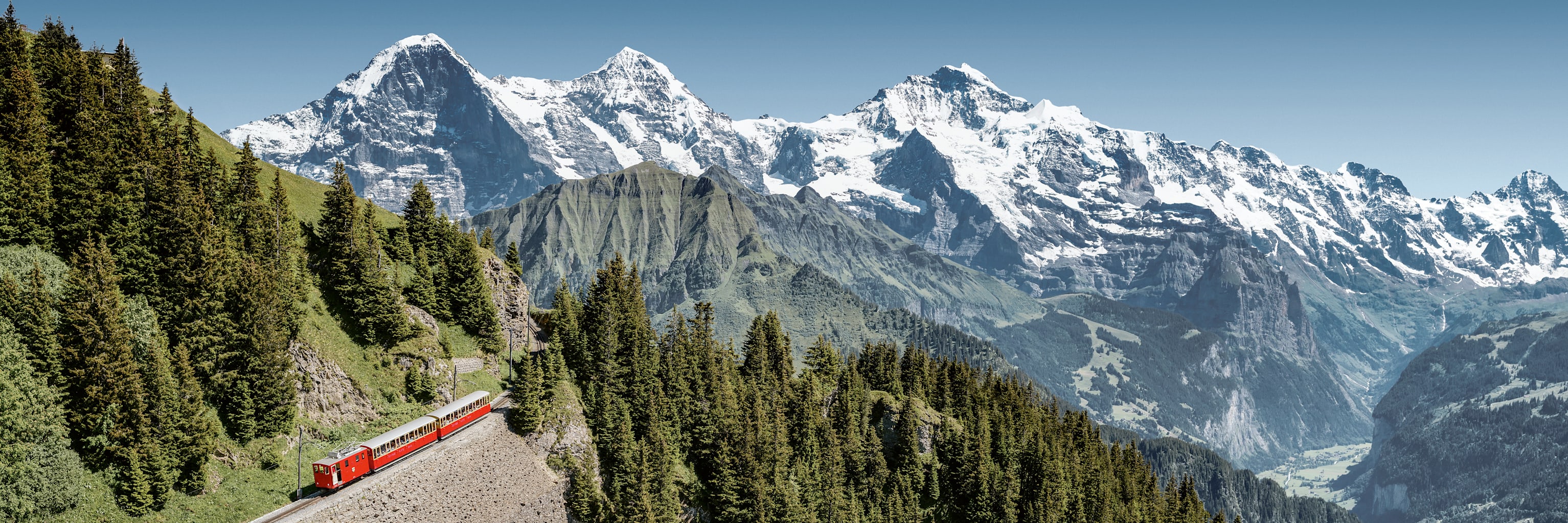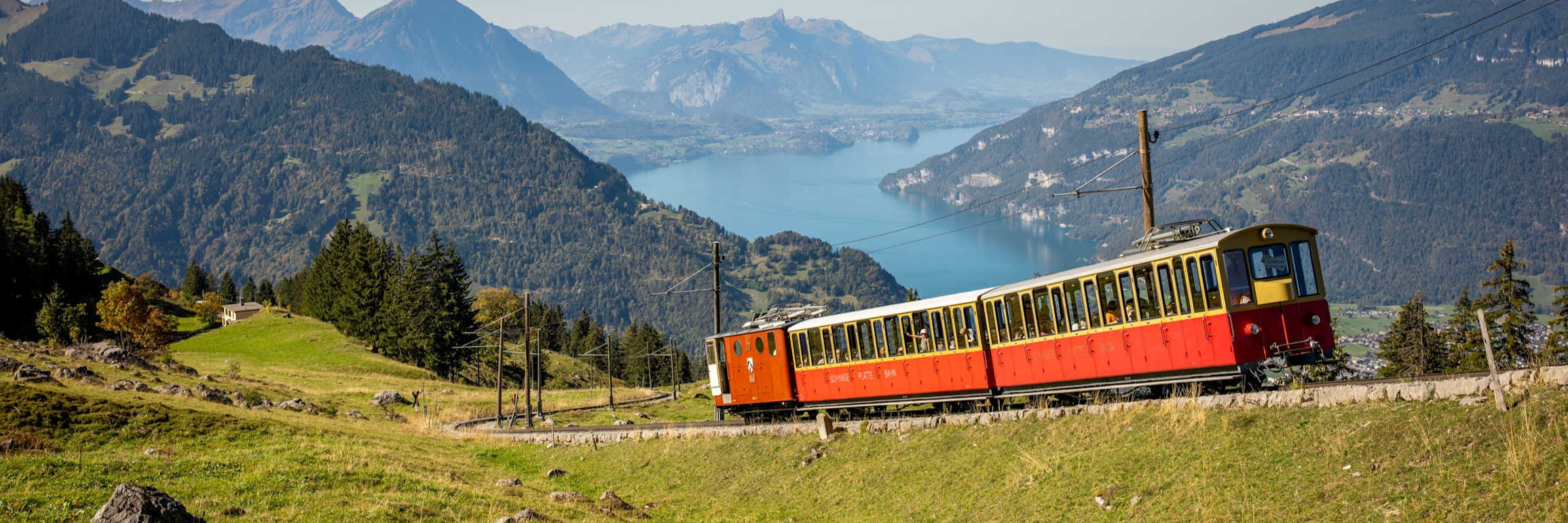The idea of building a railway to Schynige Platte was born in 1880. By then the Schynige Platte was already a popular excursion destination. It took ten years for the project to take shape and for the federal authorities to grant a concession. On 14 June 1893, the railway began regular operation. Up to the end of 1913, the trains were run using steam locomotives. From 1914, travellers were riding on the newly purchased electric locomotives, which were ultra-modern at the time.
Today, this exact juncture in the history of technology, when electricity began to replace steam power, can be comprehended based on the Schynige Platte Railway. All of the trains in operation here are still run exclusively by the electric locomotives from this pioneering time, which are now over a hundred years old. The railway system also offers an insight into countless details that have long disappeared elsewhere: as in the past, the locomotive pushes the cars upwards instead of pulling due to a steep incline, 25 % at maximum. There are no electronic signals at any point along the route. The trains are sent to the track personally by the station master. At train crossings, all track switches have to be operated by hand.
Even the rail infrastructure itself still mainly originates from the beginning of railway operation. This means that most of the overhead line masts are still made from wood and have the original curved cantilevers. Engineering structures such as supporting walls, tunnels and smaller bridges, as well as the side edging of the ballast bed, are built from quarrystone, some of which are even with drywall construction.


